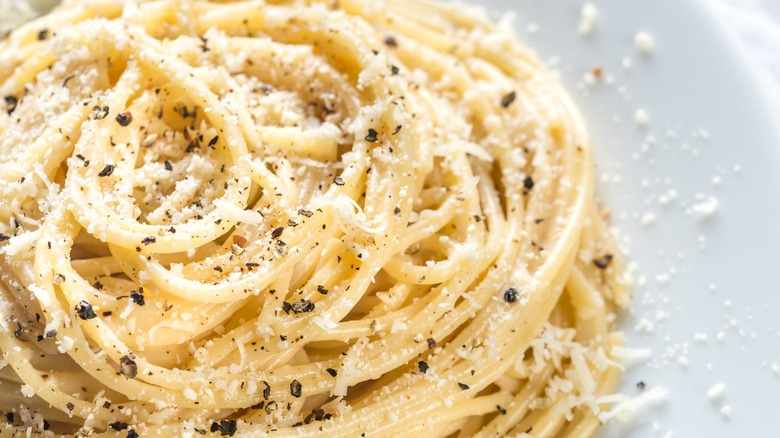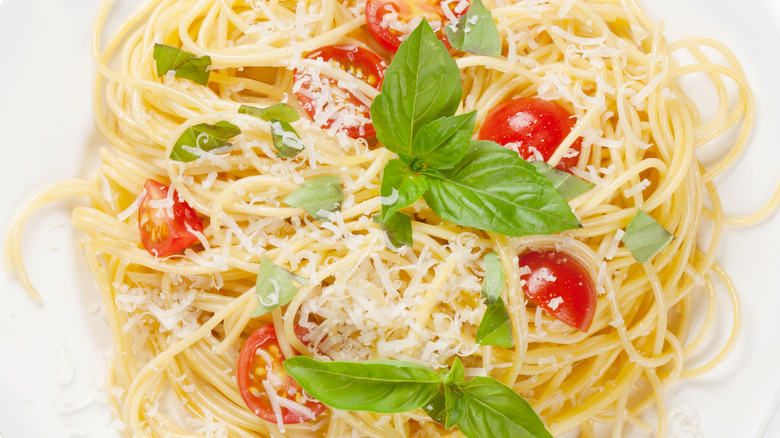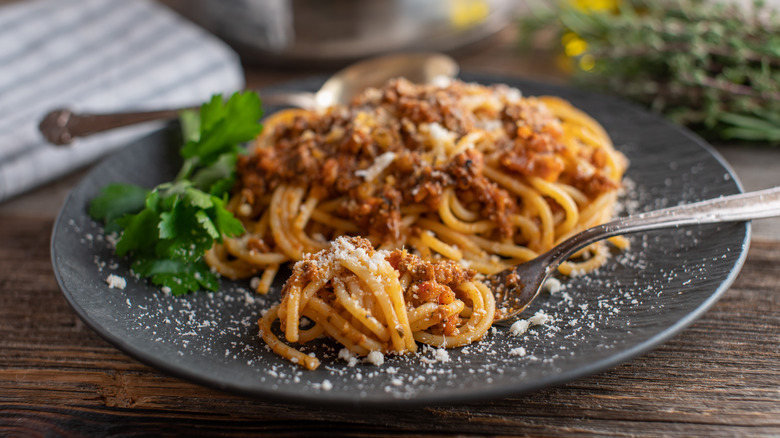Add Parmesan To Pasta Before The Sauce, And Thank Us Later
Pasta and cheese — is there a better food combination? Pasta is great because it can be combined with a variety of sauces, herbs, spices, and various types of cheeses to create a range of delicious and flavorful dishes. It can be served hot or cold, as a main course or as a side dish, and it is usually pretty quick to prepare. Add in the fact that it's generally an inexpensive food, and it's understandable why pasta is so popular.
Cheese is similarly a fan favorite because it has a rich and often savory taste, and it can be eaten as a snack or added to a range of dishes, such as pizza, sandwiches, salads, and all types of pasta. When you add just about any type of cheese to pasta you get a winning combination, but parmesan is an especially delicious choice. But when should you add your parmesan to the pasta, how should you add it, and why?
Adding parmesan to pasta the right way
For creamy pasta sauces, such as Alfredo or carbonara, cheese is typically added to the sauce while it is being prepared. This helps the cheese melt and thicken the sauce. For pasta dishes that are baked or cooked in the oven, cheese can be added before baking to allow it to melt and become a nice, crispy golden brown. Grated or shredded parmesan cheese is often used as a topping for pasta dishes, but if you want to get the most flavor from it, you should add it directly to the pasta after it has been cooked and drained — while it is still hot. This will help the cheese melt and distribute evenly throughout the dish.
After the parmesan has coated the pasta, you can add your sauce — and then top it with more cheese! Or not. Either way, the parmesan on the noodles creates a new way to experience pasta, infusing the pasta itself with delicious parmesan flavor. But what happens if you can't get the cheese to stick? There's a trick for that, too.
Getting cheese to stick to pasta
A good pasta dish is one of those foundational recipes that you should master, so learning how to get cheese to properly stick to the pasta is a must. First, keep in mind that the best types of cheese to melt with pasta are grated or shredded because those will melt faster. Also be sure to cook the pasta in salted water, which helps to create a sticky surface on the pasta that helps the cheese adhere better.
Before draining the pasta, reserve about a half cup of the cooking water. Then, drain the pasta and return the noodles to the pot. If the cheese hasn't stuck, add the reserved pasta water, and toss until the cheese has melted and formed a creamy sauce that clings to the pasta thanks to the extra starch. You can also use melted butter or olive oil to help the cheese stick to the pasta without clumping. Just toss the noodles in the oil after you have drained them, then add the cheese and toss until it has melted onto the pasta.


